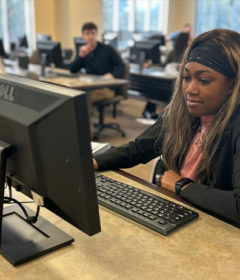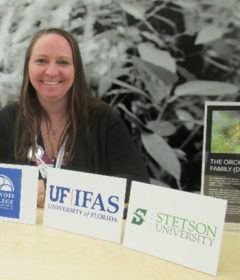Fundraising Feeds Success
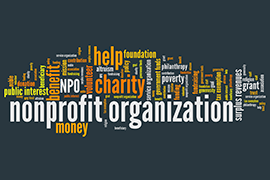
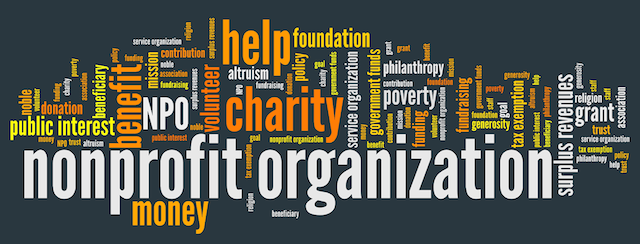
“The fault, dear Brutus, is not in our stars, But in ourselves …” William Shakespeare
by Fritz McDonald
Why should I care? It’s hard to get excited about another fundraising campaign. Unlike admissions recruiting where results are immediate — a new class each fall — comprehensive campaigns seem abstract, distant.
You’re asking people to bet on a future they may not see. Most ordinary citizens never earn enough to get their names on buildings, and noble causes compete for their attention every day: Doctors Without Borders, Red Cross, the local food pantry.
Some wonder whether colleges and universities really need the money. In the past few years, Stanford and Harvard broke national fundraising records pushing their respective endowments ever further up into the billions. Even Malcolm Gladwell, a best-selling author, took to his Twitter feed to express indignation at the stupendous amount of money his alma mater Yale raised.
The national fundraising picture is healthy: the 2014 Voluntary Support of Education (VSE) survey conducted by the Council for Aid to Education indicates that higher education contributions rose 10.8 percent between 2013 and 2014. In a recent Chronicle of Philanthropy survey of 335 chief advancement officers, many institutions are striving to raise 2015 donations an average 16 percent above last year.
So why bother? Perhaps because fundraising isn’t really about money and buildings. With Stetson’s new $150 million Beyond Success — Significance Campaign, there may be no more important time to care.
The Real Picture
The recent rise in contributions to colleges and universities comes with a catch: 30 percent of these gifts went to 20 institutions or what Bloomberg News calls “higher education’s less than one percent.”
Clearly, the richest institutions are pulling far ahead of the rest of the pack. The other private colleges and universities are in a “must raise money” situation to cover operating costs and building projects while providing for student and faculty support. In a sense, these private colleges are the worker bees of the fundraising landscape.
About 70-80 percent of their revenue comes from tuition. Add to that a growing number of young alumni who are burdened with so much debt they have stopped giving — national undergraduate alumni participation has dropped to less than 10 percent — and you get serious cause for concern.
Academe Under Fire
Faculty and staff cuts, dormitories “shuttered,” programs closed — you can’t escape the bad news. Higher education is in crisis, and the signs are everywhere. The Chronicle of Higher Education’s current survey on enrollment trends revealed that half of the 436 institutions that responded didn’t make enrollment and net-tuition revenue goals. The Department of Education just put 560 public and private colleges and universities on “heightened cash monitoring,” raising alarms about their financial stability. And in a new report, Moody’s Investors Service predicts that the closure rate of small colleges will likely triple by 2017.
The sacred grove of academe is now a turbulent landscape. Many institutions have suffered years of academic stagnation, poor fiscal management, shrinking endowments. It’s not easy to thrive in a college market with demands to hire the best faculty, build state-of-the-campus facilities, and offer recruitment perks like rock-climbing walls and cafeterias where vegan and gluten-free options are standard.
Thanks to brutal competition from for-profits, online programs, community colleges and public universities, hybrid institutions and the countless private institutions in your recruiting region all competing for the same shrinking pool of traditional high school students, it’s that much harder to succeed.
To keep up, colleges have been raising tuition at roughly six percent above the rate of inflation for more than 20 years. The resulting student debt crisis has increased pressure on private colleges and universities to prove their value in practical terms to parents and students. In other words, just what kind of job will my child get with a Stetson degree?
For many institutions, freezing tuition or even permanently lowering it is not the answer. Even after Ashland University in Ohio trimmed tuition by roughly $11,000, its enrollment fell for three years, and Moody’s dropped its rating eight levels due to a significant risk for default.
Factor in a still-recovering — some would say faltering — economy and a common theme emerges: countless private colleges showing flat or declining revenue that isn’t even close to the rate of inflation.
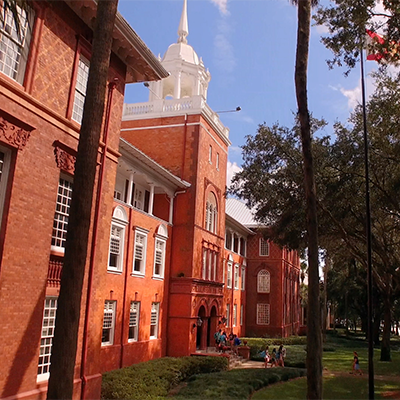
Where Stetson Fits
In the midst of this storm, Stetson is not just surviving — it’s sailing the waves. Enrollment is up 4.7 percent from last year, institutional rankings in U.S. News & World Report and other leading indicators of success have risen, and improvements to facilities can be seen across campus.
There’s a spirit of change in the air, something that even visitors to campus with no Stetson connections feel. Although Stetson is in much better shape than many institutions, recruiting will remain an ongoing challenge, the competition will grow and the unexpected will continue to disrupt an institution’s best-laid plans.
And while all of these challenges will make life difficult, a much more dangerous threat quietly lies in wait.
What’s Really at Stake
In this climate of failure and doubt, private colleges are at risk of losing their identities, and by extension, their missions.
The increased public pressure to guarantee that they offer degree programs that lead directly to employment threatens not only the humanities and liberal arts, but the elements of a college education that are the least measurable — and the most important.
According to Beth Paul, Ph.D., Stetson’s executive vice president for Academic Affairs and provost, the kind of unique education Stetson offers provides each student “the opportunity to learn deeply in a number of different ways and to then take the time to reflect on how those different sources of learning integrate to form a whole person. Through this education, our students become the kind of people who are passionate about making a difference in the world.”
The sum total of this education cannot be separated from its working parts: the exposure to other minds, ideas and ways of knowing; the relationships that challenge and mentor; the opportunities to put theory into action, and to live fully within a diverse and inspiring campus community.
The earning a “bang for your buck” mentality takes none of this into account. Ultimately, it’s eroding confidence in the essence of what Stetson and all private institutions deliver.
“We are consistently picking away at this kind of education nationally,” says Paul. “Over time, it will become more and more rare. There is a transformational learning experience at Stetson that is crucial for developing responsible, informed and thoughtful people and leaders. If we lose this, we lose something fundamental to our culture, our society.
“We cannot eliminate this side of the equation without losing what is unique about a college education,” Paul declares.
Fundraising Changes Fate
The comprehensive campaign may be the best tool for preserving what Stetson does best. If successful, it will build multiple streams of revenue to support the university, open up budgets and possibilities, and ease pressure on enrollment.
It will literally reshape the landscape through new facilities. Above all, it will fund initiatives that feed Stetson’s transformational education, such as The Brown Center for Faculty Innovation and Excellence and the Hollis Family Student Success Center. Both will help faculty and students continue to thrive in a learning environment that is drawing national attention.
“Education is something we do for the greater good,” says Paul. “It is essential to the quality of our collective future as a country.”
Campaigns of this scale have a long-term impact: Money raised now will pay dividends long after this one has concluded.
Think of the way estate gifts mold the future. At Muhlenberg College, for instance, some young alumni are already putting the college in their wills, according to that college’s Leadership Gift Officer Jim Hess. For him, fundraising is a vital component of institutional success.
“Fundraising is a means of giving your college or university the wherewithal to face the toughest challenges,” he says. “A huge part of a campaign is communicating your goals and aspirations, and those success stories that your community and alumni can mobilize around.”
Private colleges and universities are experimenting with new tactics to accomplish this unity, such as longer campaigns that work in multiple phases, crowdfunding and social media blitzes like the University of Vermont’s recent Move-In Day Challenge, or creating new positions to connect with millennial alumni, such as Stanford’s director of Next Generation Giving.
What We Really Need
Getting people to care, however, is still the biggest challenge.
“Donors don’t give what you ask them to give to,” says Stetson University President Wendy B. Libby, Ph.D. “They give to what they love, what warms their heart.”
“Engagement” may be the most overused word on a college campus. And yet, just as some clichés derive from true sentiments, the word has connotations that apply.
Elizabeth Feist, director of Development in the Regional Advancement Office of Syracuse University, believes that while campaigns are great tools for energizing people, many schools have to start with mindset first.
“Some private colleges have wealthy students who come from a background in which giving is a common, expected activity,” Feist points out. “As a result, they achieve 50-percent participation. But many enroll students with limited to no experience in giving, and they need to be educated in what it means. This is an ongoing process at Syracuse, where due to our location we have fewer local friends and rely much more on our alumni.”
For Feist, the process paid off. Syracuse completed its first billion-dollar campaign in 2012, the largest in its history.
What does Stetson’s campaign need? The Beyond Success — Significance Campaign needs to create a more robust network of givers so that the next generation of Stetson students can make their college dreams come true — and the generation after that.
In so doing, it will open up the opportunity for all Hatters to locate the exact position of their souls in relationship to the place that first empowered them.
How Can You Care?
Acknowledge that philanthropy is about what it means to be human. In fact, the word originated in Aeschylus’ Prometheus Bound first staged in about 430 BCE. In the play, Prometheus defies Zeus, steals fire and gives it to the human race.
Fire represents light, culture and civilization: Prometheus brags to the chorus that he taught humanity the civilizing arts, such as writing, mathematics, medicine, astronomy. Though he is punished, Prometheus sees himself as a benefactor, and the word he used, philanthropos from the Greek, came to mean “man” or “humanity loving.” What Prometheus gave humanity were the tools to realize its potential.
You can do the same. Libby believes that giving is something that over time can become a major source of satisfaction in our lives.
“This campaign is about building a long-term healthy relationship with our alumni,” she says. “Today, they may only be able to give a little. One day they will make gifts that don’t just support the university, but transform it. Part of our job is to find them and help them understand that part of their soul.”
More than anything else, Stetson’s Beyond Success — Significance Campaign will ensure that a deeply crucial education will be passed on so that someone else can explore what it means to be fully human.
Fritz McDonald is a writer and higher education marketing consultant whose clients range from UCLA to Cornell College. He has presented at national conferences, such as the AMA Symposium for the Marketing of Higher Education, written the PBS documentary North Carolina, and has a novel forthcoming from Prairie Lights Books.
This article originally appeared in the latest issue of Stetson magazine.

